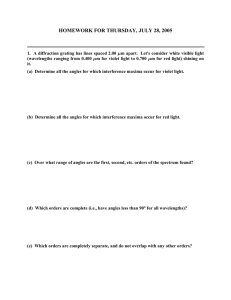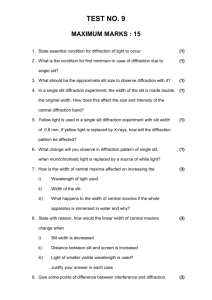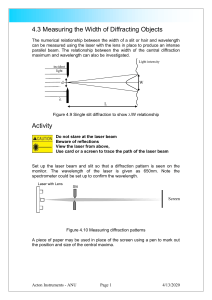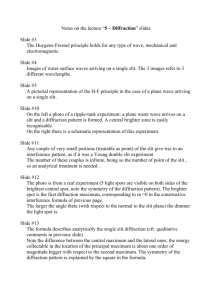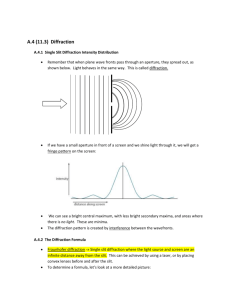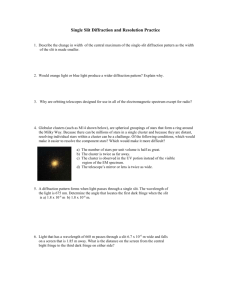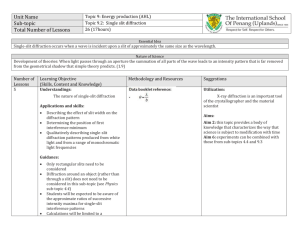Interference & Diffraction Experience
advertisement
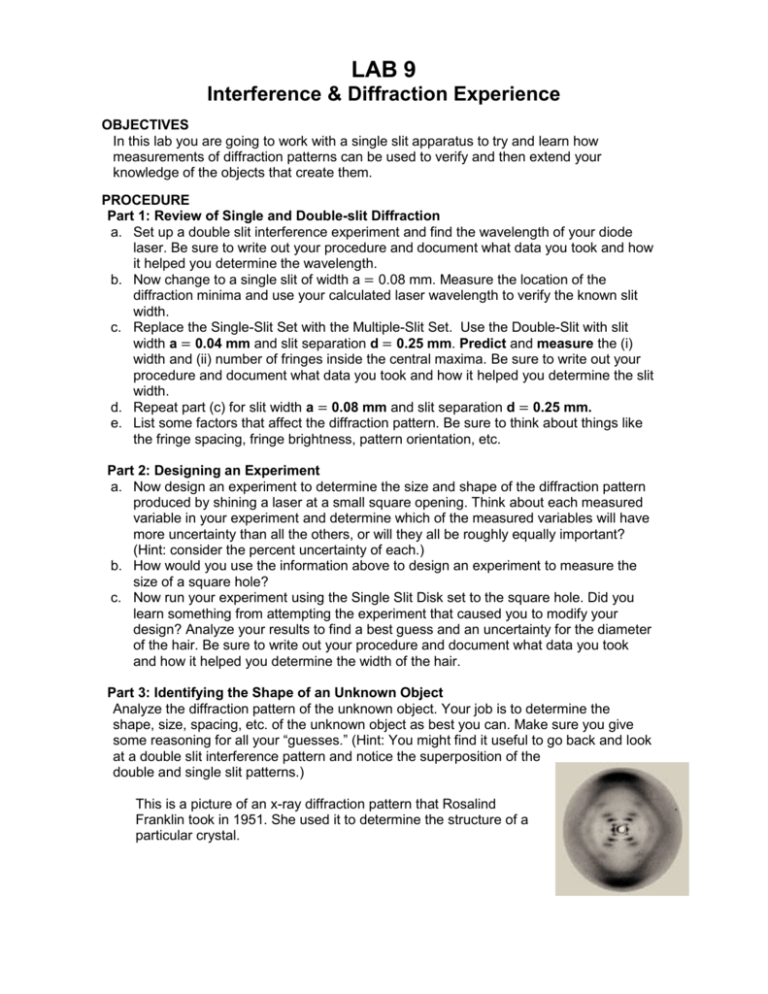
LAB 9 Interference & Diffraction Experience OBJECTIVES In this lab you are going to work with a single slit apparatus to try and learn how measurements of diffraction patterns can be used to verify and then extend your knowledge of the objects that create them. PROCEDURE Part 1: Review of Single and Double-slit Diffraction a. Set up a double slit interference experiment and find the wavelength of your diode laser. Be sure to write out your procedure and document what data you took and how it helped you determine the wavelength. b. Now change to a single slit of width a = 0.08 mm. Measure the location of the diffraction minima and use your calculated laser wavelength to verify the known slit width. c. Replace the Single-Slit Set with the Multiple-Slit Set. Use the Double-Slit with slit width a = 0.04 mm and slit separation d = 0.25 mm. Predict and measure the (i) width and (ii) number of fringes inside the central maxima. Be sure to write out your procedure and document what data you took and how it helped you determine the slit width. d. Repeat part (c) for slit width a = 0.08 mm and slit separation d = 0.25 mm. e. List some factors that affect the diffraction pattern. Be sure to think about things like the fringe spacing, fringe brightness, pattern orientation, etc. Part 2: Designing an Experiment a. Now design an experiment to determine the size and shape of the diffraction pattern produced by shining a laser at a small square opening. Think about each measured variable in your experiment and determine which of the measured variables will have more uncertainty than all the others, or will they all be roughly equally important? (Hint: consider the percent uncertainty of each.) b. How would you use the information above to design an experiment to measure the size of a square hole? c. Now run your experiment using the Single Slit Disk set to the square hole. Did you learn something from attempting the experiment that caused you to modify your design? Analyze your results to find a best guess and an uncertainty for the diameter of the hair. Be sure to write out your procedure and document what data you took and how it helped you determine the width of the hair. Part 3: Identifying the Shape of an Unknown Object Analyze the diffraction pattern of the unknown object. Your job is to determine the shape, size, spacing, etc. of the unknown object as best you can. Make sure you give some reasoning for all your “guesses.” (Hint: You might find it useful to go back and look at a double slit interference pattern and notice the superposition of the double and single slit patterns.) This is a picture of an x-ray diffraction pattern that Rosalind Franklin took in 1951. She used it to determine the structure of a particular crystal.
